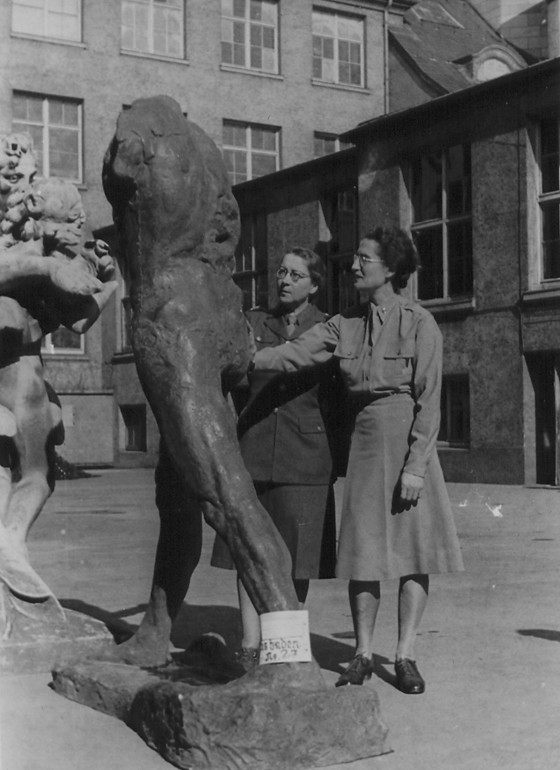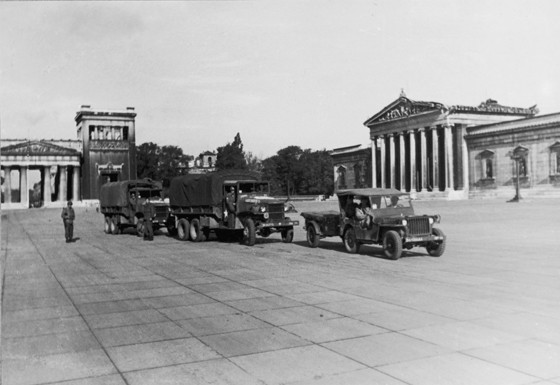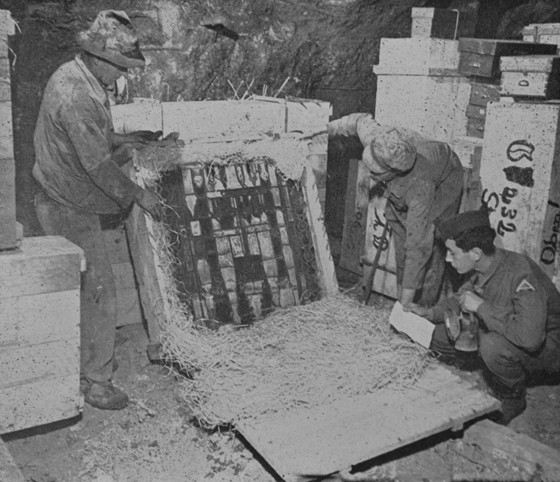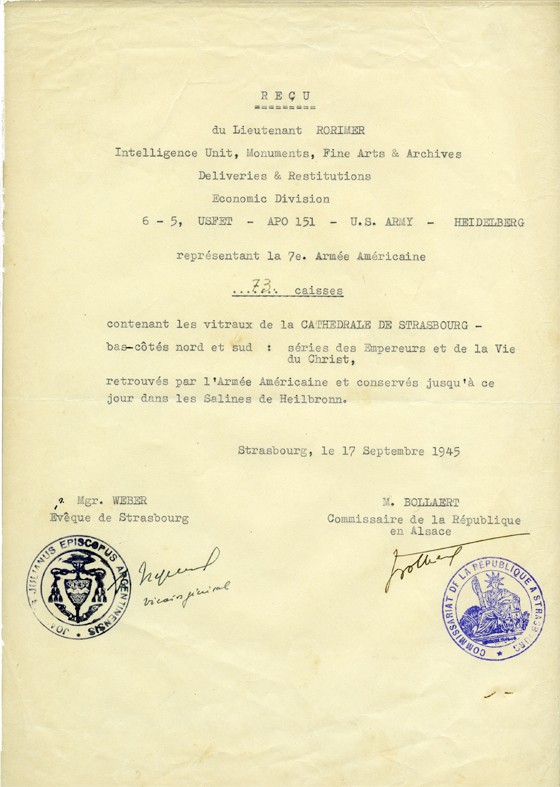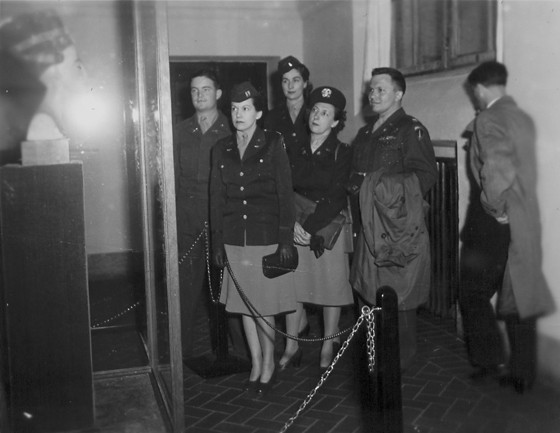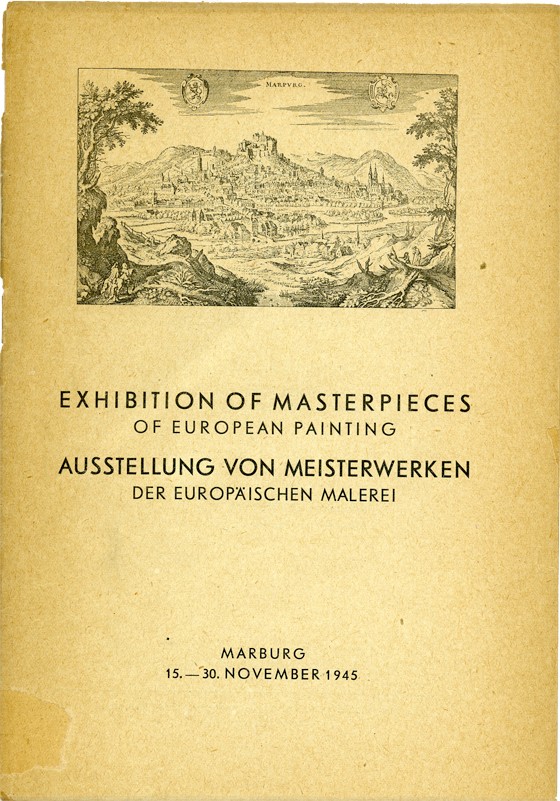The Monuments Men
and the National Gallery of Art
VI. Restitution and Closure
American restitution policies guided the monuments officers as they undertook their final herculean task of returning precious objects to owners. Nazi records and card files seized at Schloss Neuschwanstein and elsewhere became important sources, and American officers worked closely with their counterparts from other nations to complete the task. From the time of its establishment, the Roberts Commission had advised the State Department on the principles that should govern restitution of art and cultural materials after the war.
Captain Rose Valland (left) and Captain Edith Standen (right) at the Wiesbaden
Central Collecting Point, 1946. Edith Standen Papers
Rose Valland and Edith Standen were among the few women who served as monuments officers. As a curator at the Jeu de Paume in Paris, Valland had kept secret records of works of art selected for shipment to Germany. Standen served as director of the Wiesbaden Central Collecting Point from 1946 to 1947. Before the war she had been secretary to the Widener Collection, one of the great founding collections of the National Gallery of Art.
First convoy of art returned to France from the Munich Central Collecting Point, 1945. Craig Hugh Smyth Papers
The Munich Central Collecting Point shown here was located on the Königsplatz in two buildings that had been used as Nazi party headquarters.
Stained-glass windows of Strasbourg cathedral. Charles Parkhurst Papers
The Nazis had moved the Strasbourg cathedral windows to a salt mine at Heilbronn, Germany, where they were found by the Seventh US Army in April 1945. Monuments man Harry Ettlinger (right) is shown here inspecting them.
Receipt for the Strasbourg stained-glass windows. James Rorimer Papers
On September 17, 1945, seventy-three crates containing the stained-glass windows of Strasbourg cathedral were loaded onto a convoy of five trucks at Heilbronn for return to France. Monuments officer James Rorimer was given this formal receipt when the windows were transferred to French custody.
Visitors to the Wiesbaden Central Collecting Point exhibition of Berlin treasures. Charles Parkhurst Papers
Monuments officers organized extraordinary exhibitions of works of art found in Nazi hiding places to boost the morale of Allied troops and to establish cooperative relationships with the German postwar art museum community. The bust of Nefertiti from the collection of the Neues Museum in Berlin can be seen at the left.
Program for one of the MFAA exhibitions. Charles Parkhurst Papers
